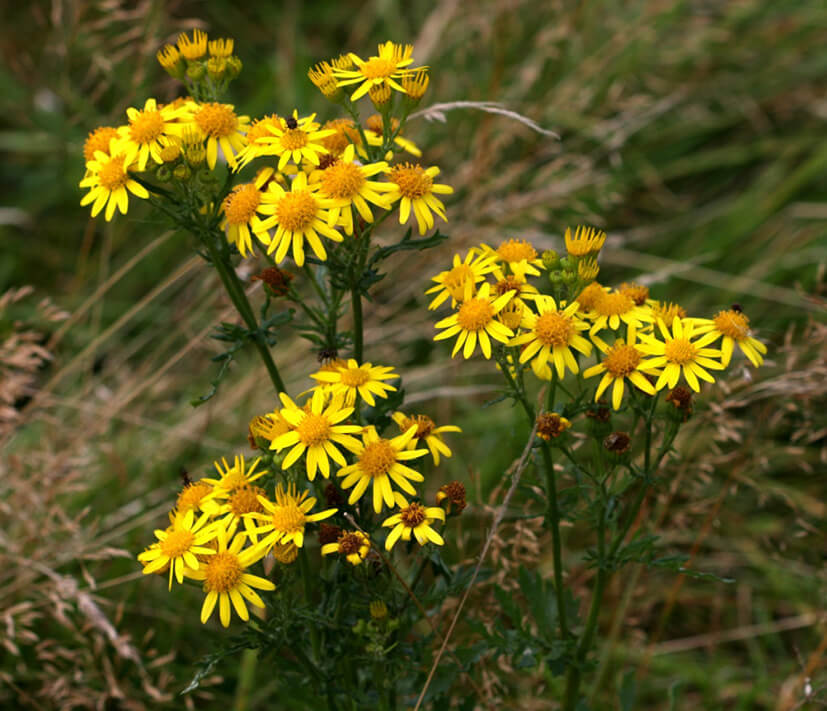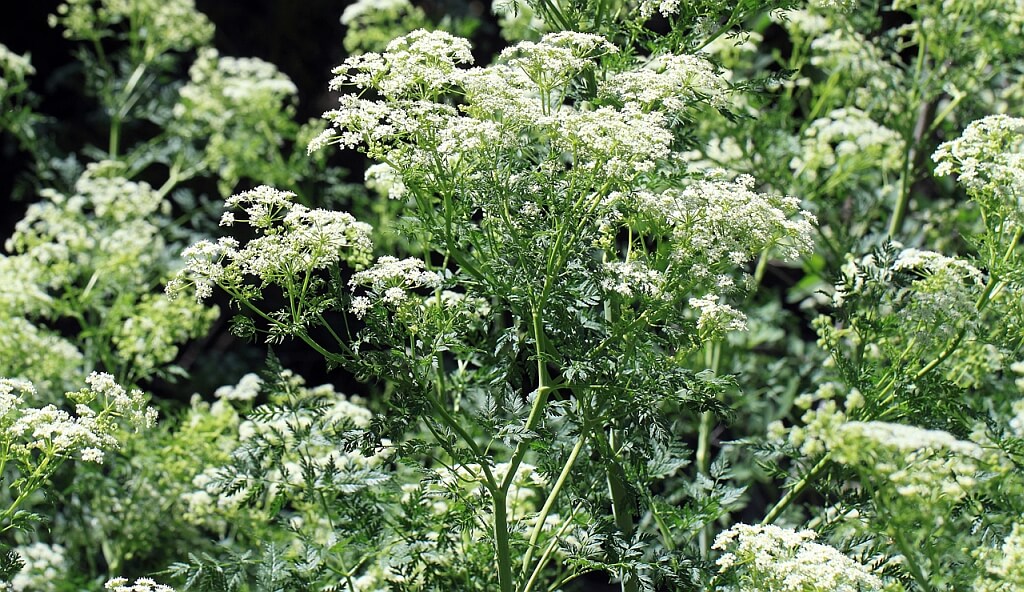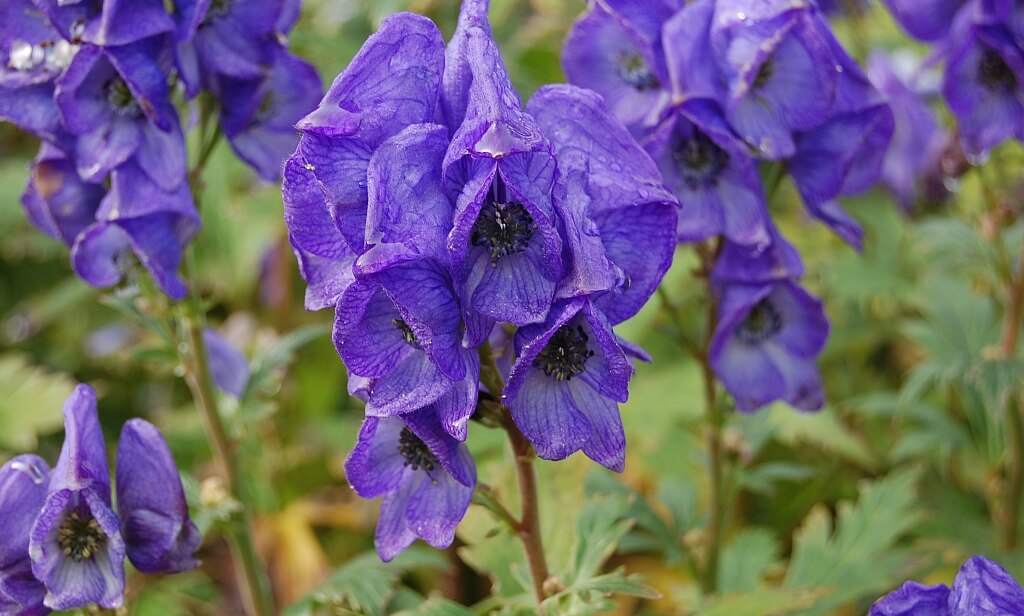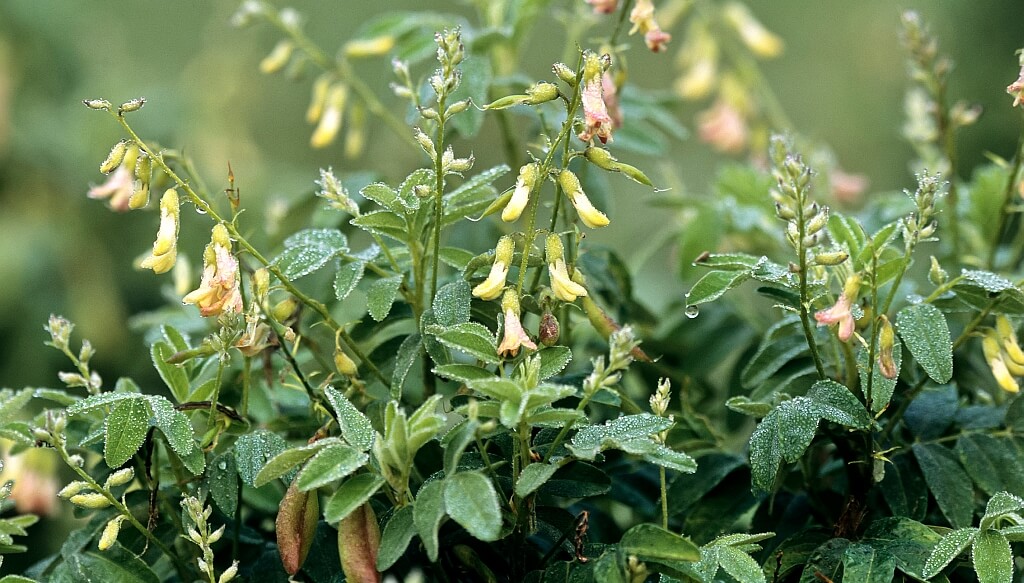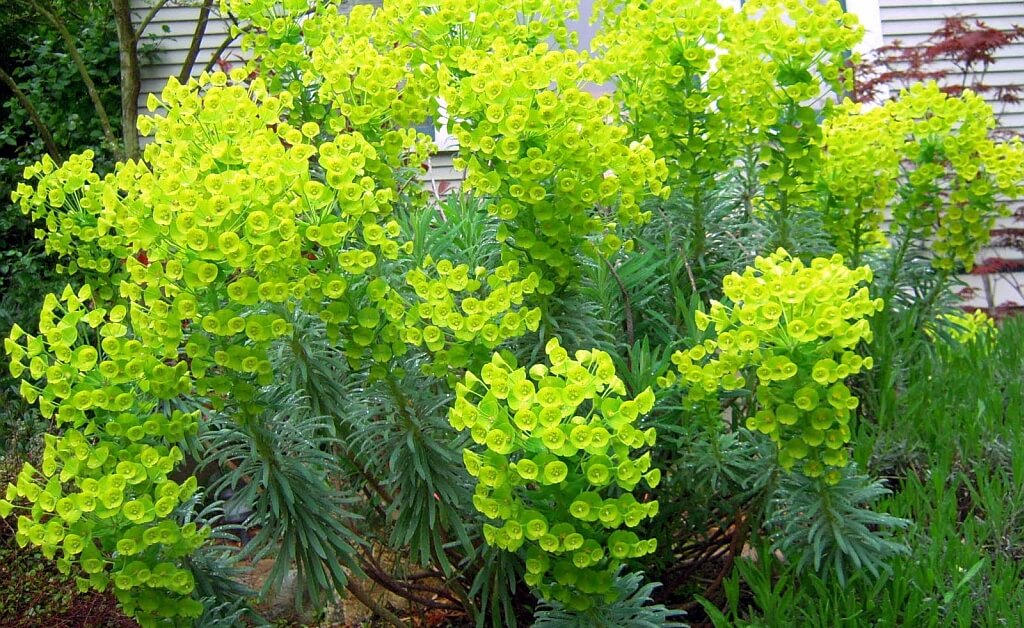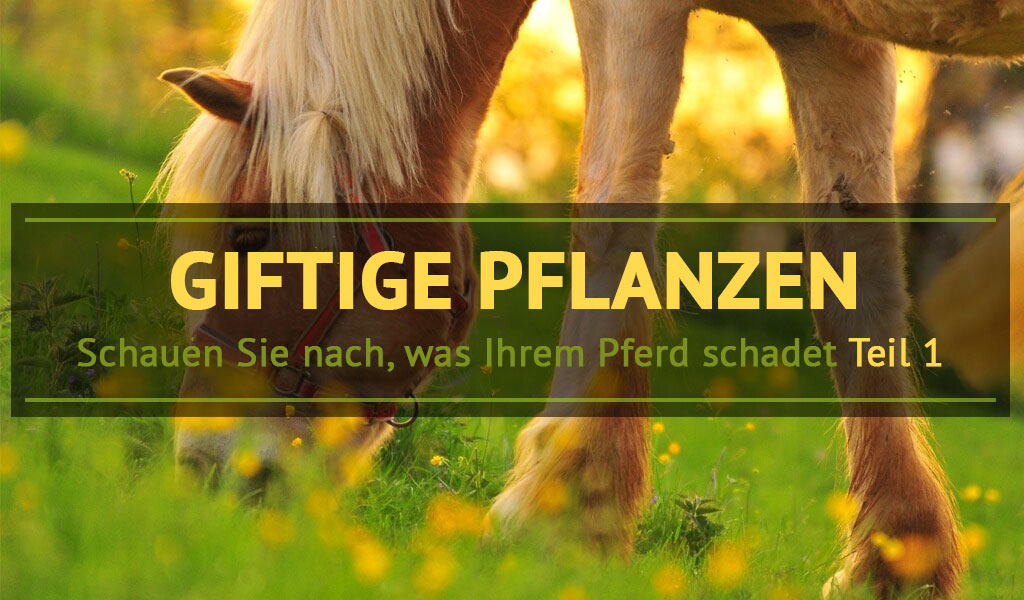
Hintergrundquelle: esiowa.com
Unsere Pferde werden vor allem im Sommer praktisch täglich auf den Paddock gelassen. Fragen wir uns jedoch, welchen Gefahren sie auf der Weide ausgesetzt sein könnten? Wir bieten ihnen Schatten an heißen Tagen, Zugang zu Wasser und Schutz vor Insekten – das reicht aber möglicherweise nicht aus, wenn sich zwischen Gräsern und Bäumen giftige Pflanzen befinden. Sie sind die häufigste Ursache für Vergiftungen, Durchfall und schwer zu diagnostizierende Krankheiten. Die Ursache dieser Beschwerden können schädliche Substanzen sein, die in Pflanzen vorkommen: Glykoside, ätherische Öle, Mykotoxine, Nitrite, Nitrate, Kalloide, Cumarine und Alkaloide.
Jedes Jahr erleiden viele Pferde Vergiftungen durch den Verzehr giftiger Pflanzen. Leider enden einige Fälle aufgrund mangelnder Reaktion oder zu spätem Eingreifen der Besitzer tödlich. Denken Sie also daran, immer einen Tierarzt zu rufen, wenn wir störende Symptome bei einem Pferd feststellen, nachdem es von oder während seines Weideaufenthalts zurückgekehrt ist. Nur er kann sagen, was letztendlich die Ursache für die Verschlechterung des Gesundheitszustands des Pferdes sein kann.
Aber anstatt zu retten und zu behandeln, ist es einfacher vorzubeugen. Daher stellen wir Ihnen in unserem Artikel vor, welche Pflanzen als giftig für Pferde gelten. Wir erklären Ihnen auch, wie Sie eine Vergiftung erkennen und dem Tier in einer solchen Situation vor dem Eintreffen des Tierarztes Erste Hilfe leisten können.
Giftige Pflanzen:
Gemeine Robinie, Falsche Akazie, Robinie
(lat. Robinia pseudoacacia)
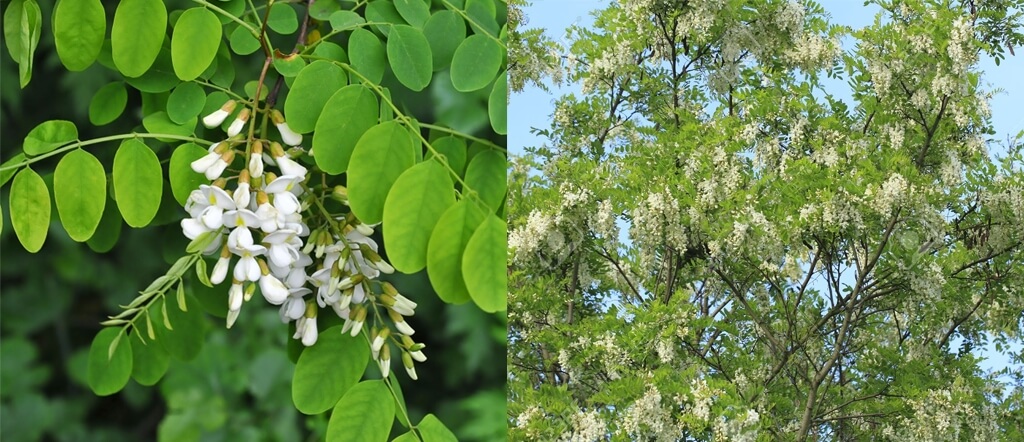
Quelle von links: tipdisease.com, 123rf.com
Die gesamte Pflanze ist schädlich, insbesondere die Blätter, Samen und Rinde des Baumes, die giftige Glykoproteine sowie seltene Aminosäuren enthalten.
Vergiftungssymptome:
- beschleunigte Herzfrequenz und Atmung
- Zitteranfälle
- Krämpfe
- Atembeschwerden
- Kolik Symptome
- Durchfall
- erweiterte Pupillen
- Apathie
- Trägheit der Gliedmaßen, Lähmungserscheinungen
Erste Hilfe
- Verabreichen Sie so schnell wie möglich Aktivkohle
- Rufen Sie einen Tierarzt an, der ihm intravenös Flüssigkeiten verabreicht
- Todesfälle sind sehr selten
Gundermann, Erdefeu
(lat. Glechoma hederacea)
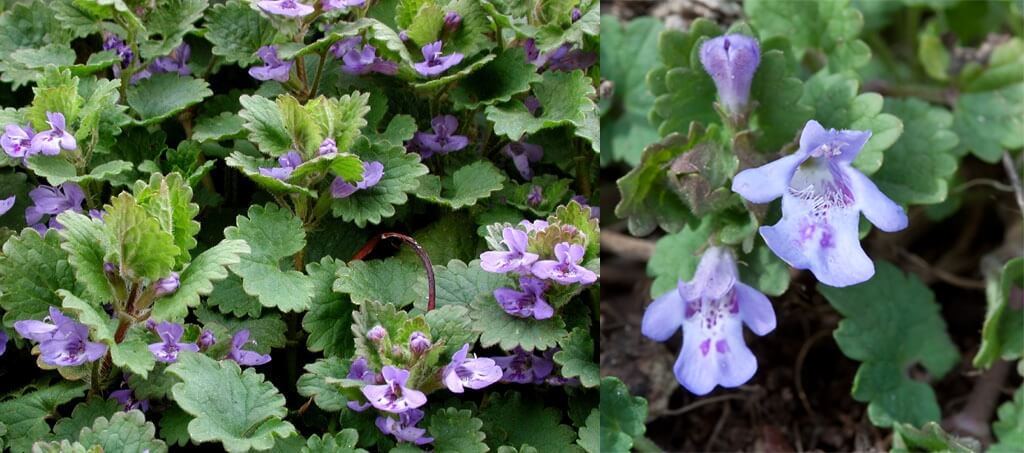
Quelle von links: delawarewildflowers.org, lmo.wikipedia.org
Die gesamte Pflanze ist giftig. Am häufigsten vergiften sich Pferde mit dem Efeu im Stall, denn der geht mit dem Heu zum Futtertrog.
Vergiftungssymptome:
- übermäßiges Schwitzen und Speichelbildung
- das Pferd wird praktisch am ganzen Körper eingeschäumt (Hals, Kruppe, Kopf, Brust etc.)
- Atemstörungen, Hyperventilation
Erste Hilfe
- Rufen Sie den Tierarzt an und lassen Sie das Pferd mit viel Fürsorge einige Tage im Stall
- Todesfälle sind sehr selten
Gewöhnliche Buchsbaum
(lat. Buxus sempervirens )
Immergrüner, meist dicht verzweigter Strauch oder kleiner Baum. Alle Pflanzenteile, insbesondere Blätter, Zweige und Rinde, enthalten eine Mischung giftiger Alkaloide, die das zentrale Nervensystem angreifen.
Vergiftungssymptome:
- heftige Krämpfe
- Durchfall
- Müdigkeit
- Magenreflux (Rückfluss von Mageninhalt)
- Konvulsionen
- Atembeschwerden
Erste Hilfe
- Sie müssen unbedingt einen Tierarzt anrufen, weil die tödliche Dosis für Pferde bereits 750 g Blätter beträgt
- Man sollte Aktivkohle vor dem Eintreffen des Tierarztes verabreichen.
Gemeine Eibe
(lat. Taxus baccata)
Quelle von links: bioinformatics.psb.ugent.be, horsedvm.com
Die als Zierpflanze gepflanzte Art bildet im Gegensatz zu anderen Nadelbäumen keine Zapfen. Alle Pflanzenteile (mit Ausnahme der Samenhüllen), insbesondere die Nadeln, sind giftig – schon 50 g sind für Pferde tödlich.
Vergiftungssymptome:
- Bewegungs- und Kreislaufstörungen
- Durchfall
- Kolik Symptome
- Lähmung der Atemwege und des Herzens - Tod des Tieres
- die Auswirkungen sind:
- Schäden an Nieren und Blase
- Schwächung des Herzmuskels
Erste Hilfe
- Rufen Sie unbedingt den Tierarzt an! Eibe ist eine der gefährlichsten Pflanzen für Pferde.
Eiche
(lat. Quercus )
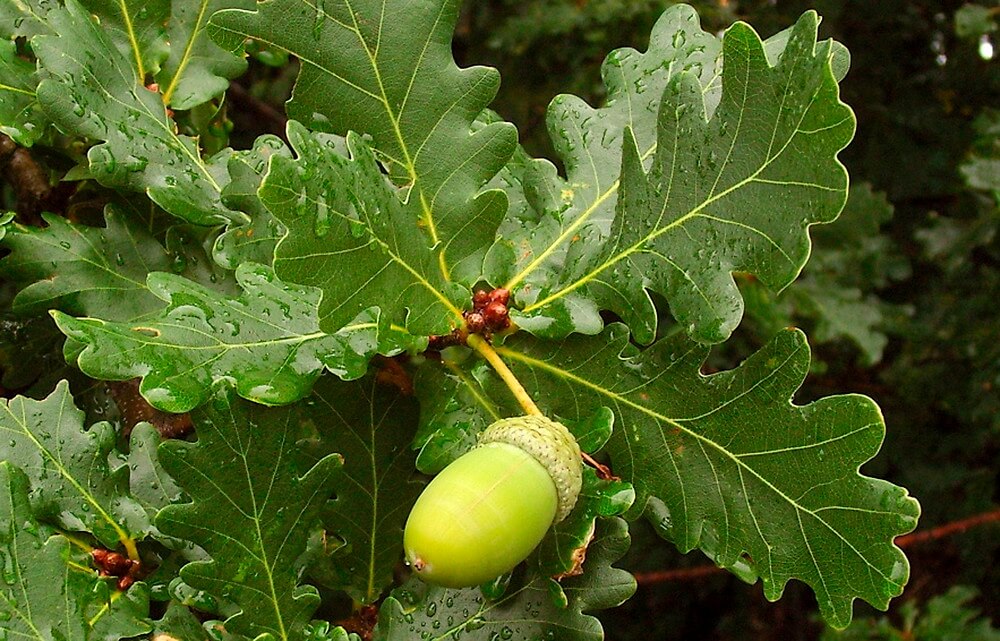
llessentialherbs.com
Ein starker und langlebiger Baum, der oft in der Nähe von Weiden und Wäldern wächst. Blätter und Eicheln, sowohl reif (braun) als auch unreif (grün), sind für Pferde gefährlich. Sie enthalten giftiges Tannin, das bei der Verdauung das Verdauungssystem stark reizt. Pferde sollten Eicheln aufgrund ihres unangenehmen, bitteren Geschmacks instinktiv vermeiden. Es kommt jedoch vor, dass sie diesen Geschmack akzeptieren und sogar nach einer solchen "Delikatesse" suchen.
Symptome einer Eichenlaub-/Eichelvergiftung:
- Durchfall
- Verstopfung
- Kolik Symptome unterschiedlicher Weise
- Schleim und Blut im Pferdekot
Erste Hilfe
- Man verabreicht Schmerz- und krampflösende Mittel
- Paraffinöl wirkt gut bei schwerer Verstopfung
- Geben Sie bei starkem Durchfall dem Pferd Aktivkohle
Echtes Johanniskraut
(lat. Hypericum perforatum)
Quelle: tisyachelistnik.ru
Es gehört zu den Pflanzen, die bei Pferden eine Photosensibilisierung bewirken, d. h. die Anfälligkeit für die schädliche Wirkung der Sonne erhöhen und zur Entstehung von Hautverbrennungen beitragen. Auf diese Weise wirkt Johanniskraut auch, wenn es trocken ist und sich in geringer Menge im Heu des Pferdes befindet. Die Substanz namens Hypercin wirkt photosensibilisierend in ihm.
Vergiftungssymptome:
- Hautreizungen
- Verbrennungen durch die Sonnenstrahlen
- Rötung
- Schwellung
- Berührungsempfindlichkeit
- Bläschen, Erosionen und Nässen
Erste Hilfe
- Bei symptomatischer Behandlung lohnt es sich, einen Tierarzt anzurufen, der das entsprechende Medikament verschreibt
- Um solche Probleme in Zukunft zu vermeiden, sollte man bei weißen Pferden Cremes mit hohem UV-Filter verwenden
Schöllkraut
(lat. Chelidonium maius)
Quelle: naturespot.org.uk
Am häufigsten an schattigen Stellen am Waldrand zu finden. Es wird allgemein als gewöhnliches Unkraut angesehen. Schöllkrautsaft enthält verschiedene Alkaloide, die Entzündungen der Schleimhäute des Verdauungssystems verursachen. Die ganze Pflanze ist giftig.
Vergiftungssymptome:
- Kolik Symptome
- Bewusstseinsstörungen
- Schwindelgefühl
- Gleichgewichtsstörungen
- man kann sich nicht auf den Beinen halten
Erste Hilfe
- Rufen Sie sofort einen Tierarzt an!
- Pferde sterben an den Folgen eines Zusammenbruchs im Zusammenhang mit akutem Atem- und Kreislaufversagen
Hahnenfuß, Ranunkel
(lat. Ranunculus )
Feld-Ranunkel, Quelle: desktopwallpaperhd.net
Alle Teile der Pflanze enthalten giftige Saponine, einschließlich Protoanemonin mit einem scharfen, schönen Geschmack, daher sollte dies Pferde nicht dazu animieren, sie zu essen. Die Knollenwurzel enthält die größte Menge an Giftstoffen, die für Pferde schädlich sind. Es verursacht Schäden an den Schleimhäuten des Verdauungssystems - Mundhöhle, Verdauungstrakt, Nierenentzündung und verringert auch die Leistungsfähigkeit des Herzens.
Vergiftungssymptome:
- Speichelfluss
- Durchfall
- Kolik
- Maulschmerzen
Erste Hilfe
- Mundspülung mit Desinfektionsmitteln (Kaliumpermanganatlösung, Soda)
- Aktivkohle
- Man sollte einen Arzt anrufen, um Schmerzmittel aus der Gruppe der nichtsteroidalen und Glukokortikosteroide zu verabreichen
Rosskastanien
(lat. Aesculus)
Quelle: lookforddiagnosis.com
Junge Knospen und Kastaniensamen sind gefährlich, besonders für junge und allgemein geschwächte Pferde.
Vergiftungssymptome:
- Kolik Symptome
- Gleichgewichtsprobleme
- unregelmäßiger Gang
- Durchfall im Wechsel mit Verstopfung
- Krämpfe, einschließlich einzelner Muskeln
Erste Hilfe
- Man verabreicht Aktivkohl
- Rufen Sie unbedingt den Tierarzt an!
Maiglöckchen
(lat. Convallaria maialis)
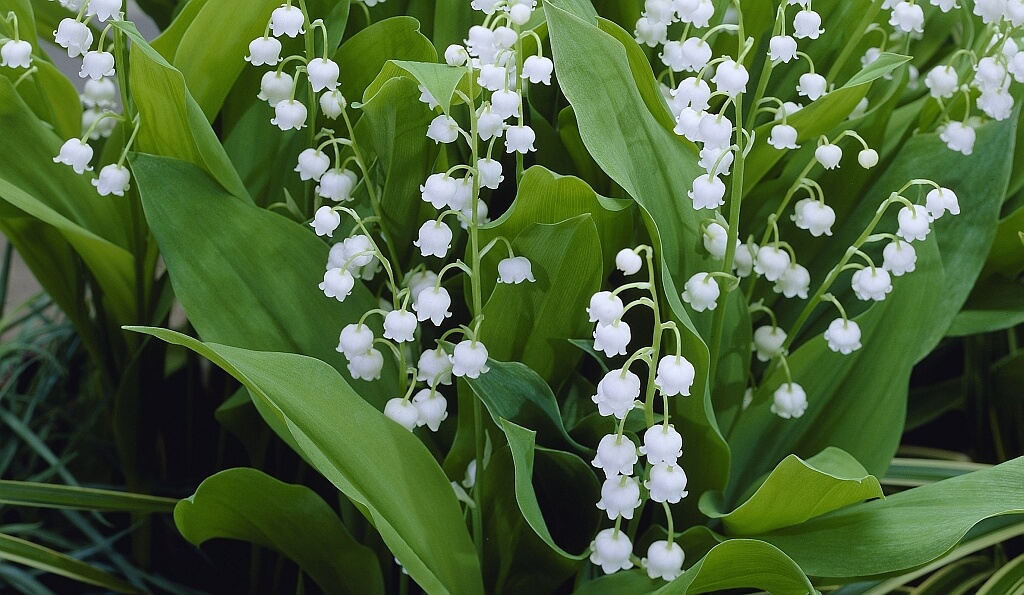
Quelle: walterblom.nl
Es kommt in leuchtenden Laubwäldern und Dickichten sowie in Berggebieten vor. Manchmal wird es als Zierpflanze gepflanzt. Alle Bestandteile des Maiglöckchens enthalten Glykoside und Saponine, die einen starken Einfluss auf den Herzmuskel haben. Die größte Bedrohung stellen jedoch die Stängel und Blätter dar. Nach Einnahme kommt es zu Magen- und Darmreizungen, Herzrhythmusstörungen.
Vergiftungssymptome:
- Krampfanfälle und andere Symptome des Nervensystems
Erste Hilfe
- Rufen Sie so schnell wie möglich einen Tierarzt an, denn eine Maiglöckchenvergiftung kann für das Pferd tödlich sein
Rot-Ahorn
(lat. Acer rubrum)
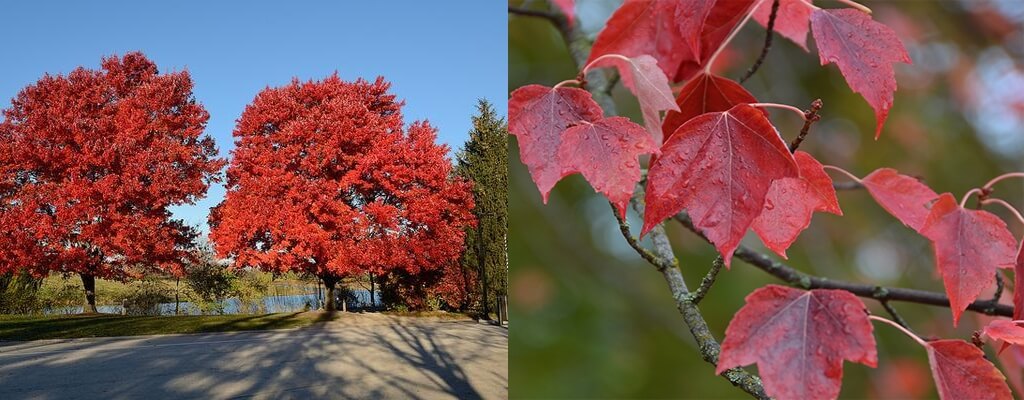
Quelle von links: plants.ces.ncsu.edu, selectree.calpoly.edu
Ein in Polen sehr beliebter Baum, der aufgrund der schönen Farbe der Blätter im Herbst oft zu dekorativen Zwecken gepflanzt wird. Diese Blätter sind für Pferde nicht giftig, wenn sie wachsen, sondern wenn sie abgeworfen werden. Einmal verdaut, gelangen die giftigen Verbindungen in den Blutkreislauf und bauen rote Blutkörperchen ab. Wird dieser Prozess nicht rechtzeitig gestoppt, werden die Nieren geschädigt und stellen ihre Arbeit ein.
Symptome einer Ahornblattvergiftung:
- anfänglich Appetitlosigkeit, Müdigkeit, Bewegungsunlust
- Gelbsucht
- Anämie
- allgemeine Schwäche
Erste Hilfe
- Rufen Sie sofort einen Tierarzt an, weil diese Art der Vergiftung zu bleibenden Schäden an den Nieren und anderen Organen bis hin zum Tod des Tieres führen kann.
Schwarze Bilsenkraut
(lat. Hyoscyamus niger)
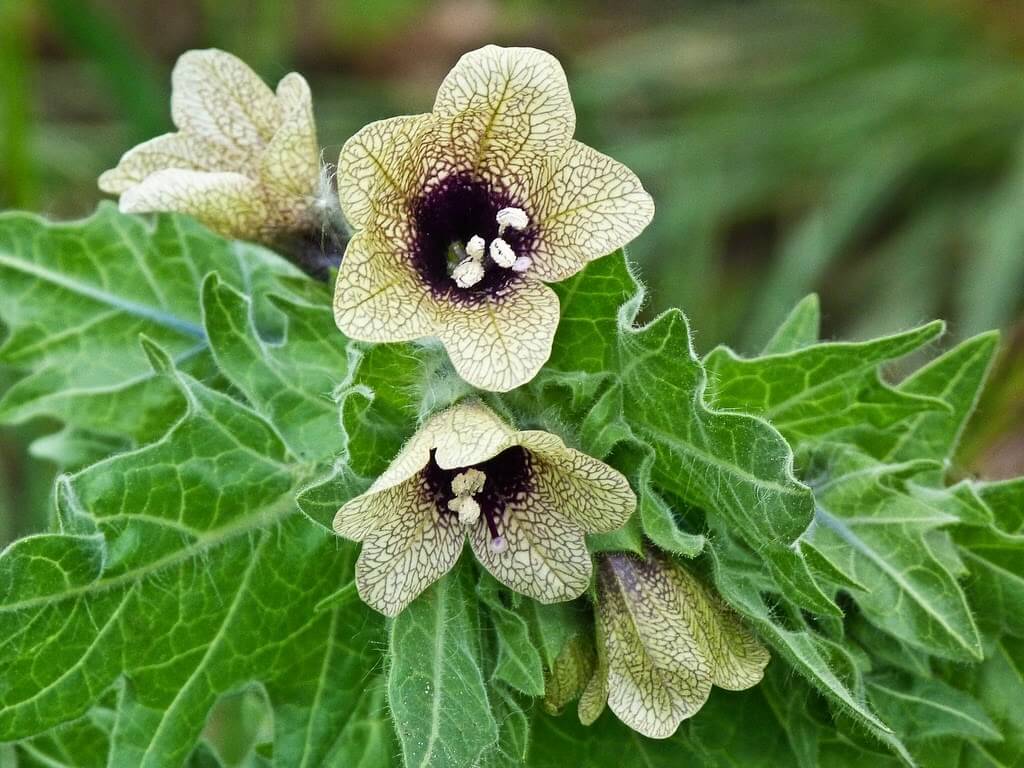
Quelle: plantotheday.blogspot.com
Es ist als gewöhnliches Unkraut bekannt. Alle Pflanzenteile enthalten die giftigen Alkaloide Scopolamin und Hyoscyamin, die zunächst stimulierend wirken und dann zu Lähmungen (bis hin zum Tod durch Atemstillstand) führen. Wurzeln und Samen sind besonders gefährlich für Pferde.
Vergiftungssymptome:
- Austrocknung der Schleimhäute
- zunächst motorische Erregung
- später Apathie, Unruhe, Trägheit, Lähmung der Gliedmaßen und Koliken
Erste Hilfe
- Rufen Sie sofort einen Tierarzt an
Lupinen
(lat. Lupinus)
Quelle: tcpermaculture.blogspot.com
Es kommt an Waldrändern und auf Feldern vor. Wilde Lupinen enthalten, hauptsächlich in reifen Samen, verschiedene Alkaloide: darunter Lupanin, Spartein, Lupine, die sogar zum Tod des Tieres führen können. Auch die jüngsten Teile der Lupine sind giftig, weil sie beim Verzehr das Verdauungssystem reizen.
Vergiftungssymptome:
- akuter und schwächender Durchfall
- Mobilitätsprobleme
- Veränderungen der Muskelanspannung
- bei schwerer Vergiftung - Krämpfe
Erste Hilfe
- Rufen Sie sofort einen Tierarzt an
Frühlings-Adonis
(lat. Adonis vernalis)
Quelle: luirig.altervista.org
Es kommt in Wäldern und Mooren vor. Die ganze Pflanze ist giftig und enthält Herzglykoside. Es zerstört die Leber und den Herzmuskel und verursacht eine Entzündung des Magen-Darm-Trakts.
Vergiftungssymptome:
- Kolik Symptome
- erhöhter Puls
Erste Hilfe
- Rufen Sie sofort einen Tierarzt an - die tödliche Dosis für ein Pferd beträgt 25 g der getrockneten Pflanze!
Roter Fingerhut
(lat. Digitalis purpurea)
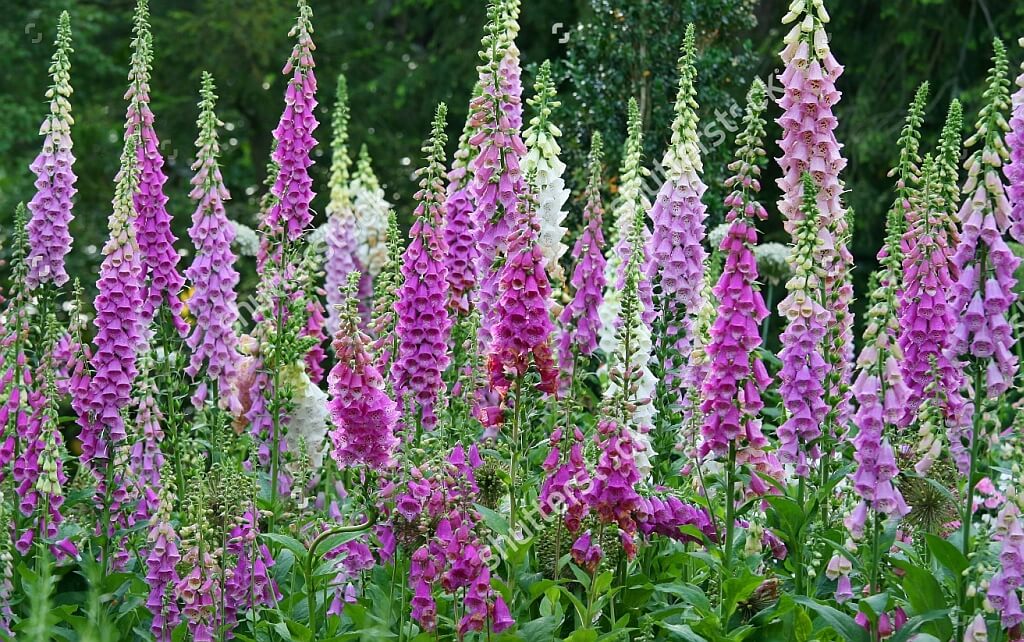
shutterstock.com
Es kommt am häufigsten an Waldrändern vor, auch als Zierpflanze. Alle Teile der Pflanze enthalten Glykoside: einschließlich Digitoxin, Digitalin, die aufs Herz wirken. Eine große Menge führt zu Störungen der Atmungsfunktionen, des Kreislaufsystems und zum Stillstand des Herzschlags. Die Vergiftung tritt am häufigsten auf, wenn Heu gegeben wird und die getrocknete Pflanze sich dort befindet. Die tödliche Dosis beträgt 25 g getrocknete Blätter.
Vergiftungssymptome:
- erstens: übermäßiges Schwitzen und Unruhe
- Reizung der Schleimhäute
- Störungen in der Arbeit des Herzens und des gesamten Kreislaufsystems
- später: Krämpfe, Konvulsionen und Koliken
Erste Hilfe
- Aktivkohle
- Rufen Sie einen Tierarzt an, der Ihnen Maßnahmen zur Stabilisierung der Herzarbeit gibt
Oleander
(lat. Nerium oleander)
Quelle: commons.wikimedia.org
Oft als Garten- oder Topfpflanze zu finden. Alle Oleander enthalten giftige und starke Glykoside, die Herz-Kreislauf-Versagen verursachen.
Vergiftungssymptome:
- Durchfall
- Herzprobleme
- Kolik Symptome
- ein starker Abfall der Körpertemperatur
- Erregung
Erste Hilfe
- Rufen Sie sofort einen Tierarzt an!
- eine der gefährlichsten Pflanzen für Pferde, führt innerhalb von 24 Stunden nach dem Verzehr zum Tod
Schwarznussbaum
(lat. Juglans nigra)
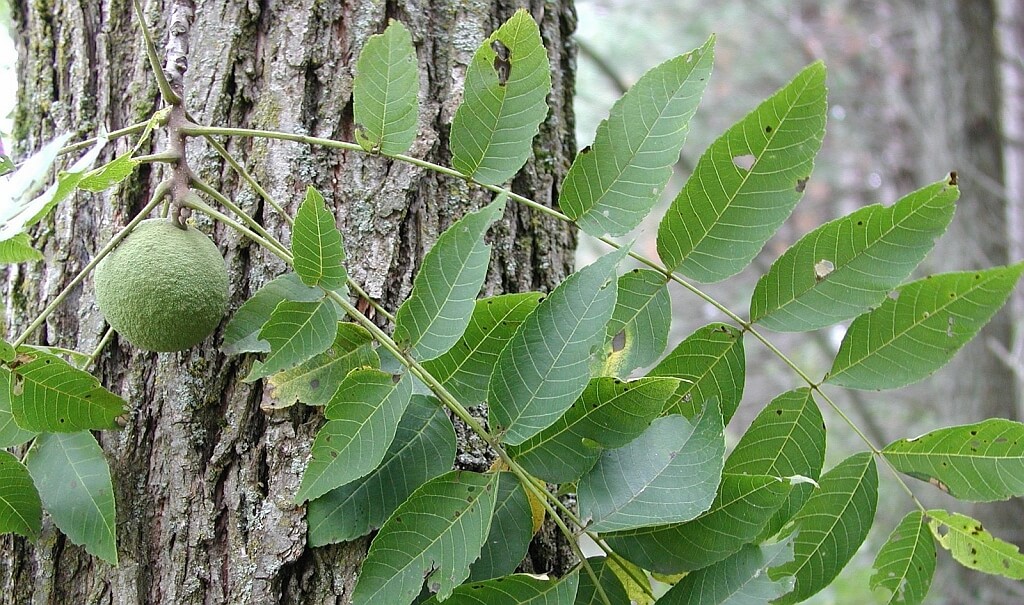
Eine Pflanze aus den USA, in letzter Zeit immer beliebter in Polen, sie wird als Zierbaum gepflanzt. Nicht nur ihre Blätter sind für Pferde schädlich. Manchmal entsteht daraus Sägemehl, das ebenfalls giftig ist. Deshalb lohnt es sich, auf Herkunft und Zusammensetzung der von uns bestellten Pferdeeinstreu zu achten.
Symptome einer Vergiftung durch Schwarznussblätter:
- Erhöhung der Herzfrequenz
- Fieber
- Schwellung der Gliedmaßen
- akute Hufrehe
Symptome bei Kontakt mit Schwarznuss-Sägemehl:
- sie erscheinen nach 24 Stunden
- allergische Reaktionen
Erste Hilfe
- Isolieren Sie das Pferd von giftigem Sägemehl, spülen Sie seine Gliedmaßen mit kaltem Wasser ab und wechseln Sie die Einstreu im Stall
- Im Falle einer Lebensmittelvergiftung müssen Sie sofort einen Tierarzt anrufen
Rittersporne
(lat. Delphinium)
Quelle: 1zoom.net
Die ganze Pflanze ist giftig. Die Symptome treten sehr schnell nach der Einnahme auf.
Vergiftungssymptome:
- Anfangs: starke Erregung
- mangelnde Bewegungskoordination
- Schwindelgefühl
- Blähung
- Herzrhythmusstörungen
- Atembeschwerden
- übermäßiger Speichelfluss
- im Laufe der Zeit: Bewegungsschwierigkeiten, Lähmungen, Krämpfe, die dem Tod des Tieres vorausgehen
Erste Hilfe
- Rufen Sie so schnell wie möglich einen Tierarzt an – die Behandlung sollte symptomatisch erfolgen
Adlerfarn
(lat. Pteridium aquilinum)
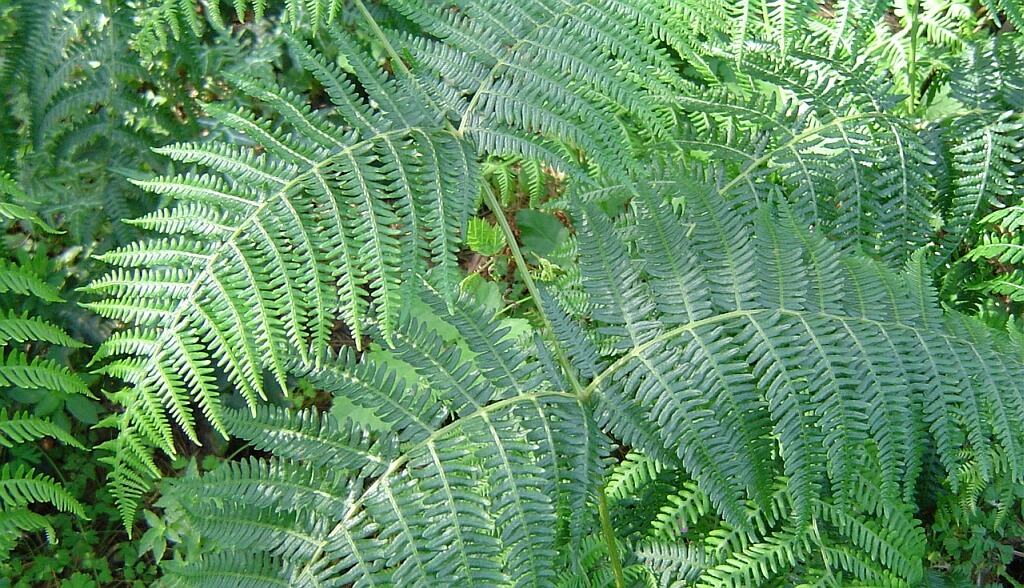
lookfordiagnosis.com
Oft in Wäldern oder am Stadtrand zu finden, manchmal als Zierpflanze verwendet. Sowohl frische Blätter als auch Stängel sind für Pferde giftig, aber auch die getrockneten, in Heu. Der Verzehr eines Farns verursacht unmittelbar danach keine schweren Symptome. Sein regelmäßiger Konsum wird jedoch gefährlich, dann können die Vergiftungssymptome nach 1-2 Monaten auftreten und den Körper verwüsten.
Vergiftungssymptome:
- Gewichtsverlust
- Mobilitätsprobleme
- die Wirbelsäule wölbt sich nach oben
- Herzarrhythmien - anfänglich langsamer Herzschlag und später Arrhythmie
- Missmut
- Arbeitsunlust
- Hyperaktivität
- Berührungsempfindlichkeit
- blutiger Durchfall
- Blut im Urin
Erste Hilfe
- der Tod des Tieres tritt in der Regel ca. 10 Tage nach Auftreten der ersten Vergiftungssymptome ein, daher sollten wir unbedingt einen Tierarzt hinzuziehen, der eventuell versucht, Thiamin zu verabreichen, was leider nicht immer die gewünschte Wirkung bringt
Schwarze Tollkirsche
(lat. Atropa belladonna)
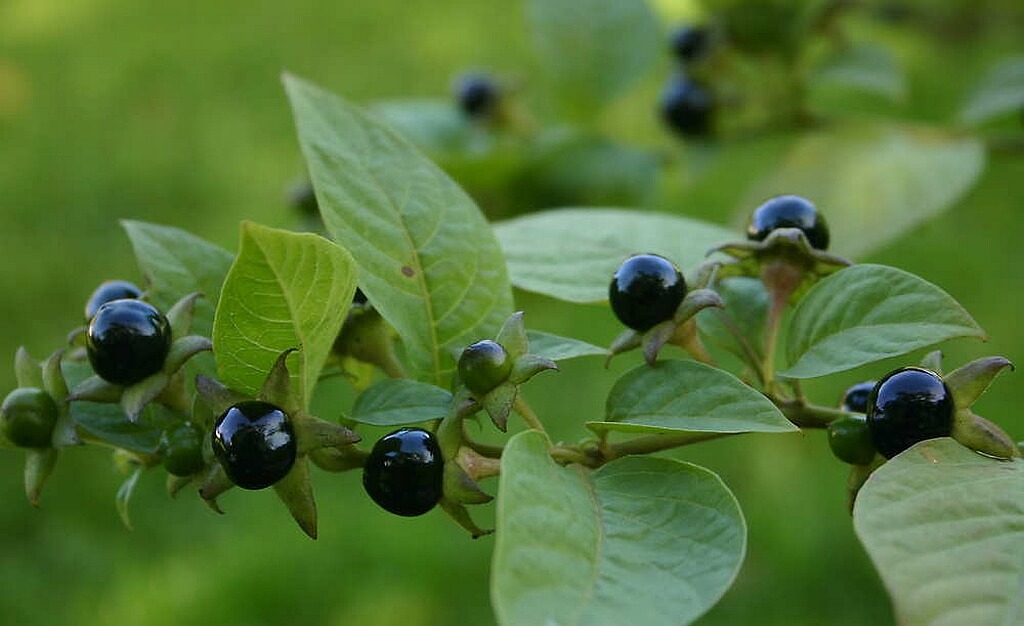
henriettes-herb.com
Die ganze Pflanze ist schädlich, aber die Frucht ist am gefährlichsten. Schwarze, glänzende Beeren von der Größe einer Kirsche enthalten eine Mischung aus starken Alkaloiden. Die tödliche Dosis beträgt 120-180 g Trockengewicht.
Vergiftungssymptome:
- erhöhter Puls
- Nervosität
- erhöhte Anzahl von Atemzügen
- Verstopfung
- Kolik
- Erhöhter Durst
- verschwommene Sicht
- erweiterte Pupillen
- Darmlähmung
- später: starke Krämpfe, Lähmungen, sehr viel Schwitzen
- Schwindelgefühl
- Probleme mit Gleichgewicht und Atmung
Erste Hilfe
- Rufen Sie sofort einen Tierarzt an
Graukresse
(lat. Berteroa incana)
Quelle: wildflowerchild.info
Die ganze Pflanze ist giftig, sogar trocken. Vergiftungssymptome treten bei einem Pferd auf, wenn es so viel von der Pflanze wie 25 % seines Futters frisst. Die ersten Symptome treten 1-2 Tage nach dem Verzehr auf.
Vergiftungssymptome:
- Schwellung der Gliedmaßen
- Hufrehe
- Fieber
- Apathie
- Ess- und Wasserunwilligkeit
- später: Dehydration und Koliken
Erste Hilfe
- Rufen Sie den Tierarzt an, der das Pferd symptomatisch behandelt, mit starkem Schwerpunkt auf Flüssigkeitstherapie
- Es ist notwendig, die Entwicklung einer Hufrehe zu verhindern, die sich in eine chronische Form verwandeln könnte
- das Todesrisiko des Tieres durch Dehydration und Kreislaufversagen
Rizinus
(lat. Ricinus communis)
Zierpflanze, heimisch in Afrika. Ihre Samen enthalten hochwirksame Glykoproteine, die zu den gefährlichsten Pflanzengiften gehören (u.a. Rizinus). Schon kleine Mengen, die ein Pferd verzehrt, verursachen Vergiftungen.
Vergiftungssymptome:
- Missmut
- Bewusstseinsstörungen
- gestörte motorische Koordination
- Problem, auf den eigenen Beinen zu bleiben
- starker Durchfall
- Darmkrämpfe
- schwacher und langsamer Herzschlag
- Halsmuskellähmung
- Zitteranfälle
Erste Hilfe
- Geben Sie dem Pferd viel Flüssigkeit
- Es lohnt sich, Aktivkohle zu verabreichen
- Rufen Sie sofort einen Tierarzt an, um Medikamente gegen Schocks und Krampfanfälle zu verabreichen
Rhododendron
(lat. Rhododendron)
Am schädlichsten sind Nektar, Blätter und Blüten. Bei den beiden letzteren enthält Rhododendron Duterpene, die ein Brennen im Hals und bei größerem Verzehr auch Magen- und Darmkrämpfe sowie eine Schwächung der Atemfunktion hervorrufen.
Vergiftungssymptome:
- Atemstörungen
- übermäßiger Speichelfluss
- Magen-Reflux
- Durchfall
- Schwächung der Muskelspannung und Arbeit
- langsamer Puls
Erste Hilfe
- Geben Sie so schnell wie möglich Aktivkohle und Abführmittel, um den Prozess der Entfernung von Giftstoffen aus dem Körper zu beschleunigen
Acker-/Sumpf-Schachtelhalm
(lat. Equisetum arvense/Equisetum fluviatile)
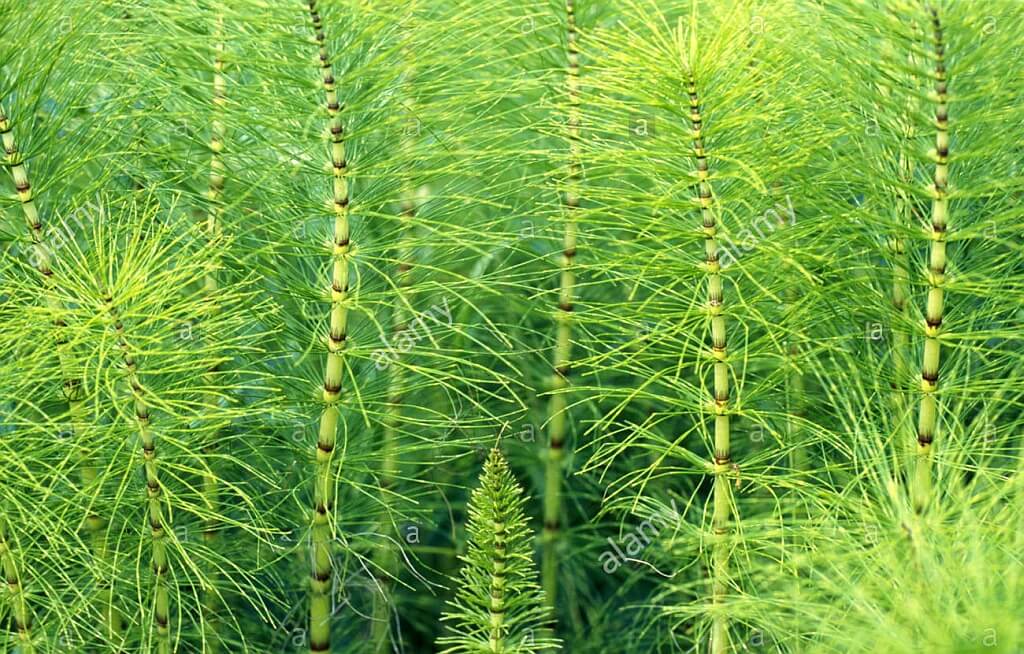
alamy.com
Alle Teile der Pflanze enthalten giftige Alkaloide (einschließlich Nikotin), große Mengen an Kieselsäure, Saponine und Flavonoide (Equiseterin und Isoquertin). Schachtelhalm bleibt auch nach dem Trocknen gefährlich. Langfristiger Verzehr von Futtermitteln, die Schachtelhalm enthalten, wird sehr schädlich.
Vergiftungssymptome:
- Durchfall
- wackelige Bewegung, Taumeln - beeinträchtigte motorische Koordination
- Trägheit
- Muskelkrämpfe und Lähmungen
- Kruppen Probleme
- langsamer Herzschlag
- verringerte Körpertemperatur
- Gewichtsverlust
- Probleme mit der Schwangerschaft und dem Schwangerschaftserhalt
- Avitaminose - Vitamin B1 Mangel
Erste Hilfe
- Eine zu späte Diagnose einer Vergiftung und eine fehlende Behandlung können für das Pferd tödlich sein
- Der Tierarzt sollte dem Pferd Thiamin per Injektion geben
Jakobs-Greiskraut
(lat. Jacobaea vulgaris)
Autor: David Nicholls, źródło: naturespot.org.uk
Diese Pflanze findet man meist an Wegrändern, Schutt, Brachen und als Wildkraut in Gärten. Es ist die häufigste Vergiftungsursache auf den Britischen Inseln. Alle Teile der Pflanze enthalten giftige Alkaloide, die auch nach dem Trocknen wirken. Der ständige Verzehr durch Pferde (z. B. mit Heu) führt zu schweren Leberschäden. Es kann mehrere Monate dauern, bis Symptome auftreten.
Vergiftungssymptome:
- Schwellung
- Gelbsucht
- Abmagerung
- Körperschäden
- Symptome, die mit dem Versagen des Nervensystems verbunden sind
Erste Hilfe
- Es ist notwendig, die Vergiftung so schnell wie möglich zu diagnostizieren und einen Tierarzt anzurufen
Gefleckter Schierling
(lat. Conium maculatum)
Quelle: wnmu.edu
Diese Pflanze kann auf nassen Trümmern, Dickichten in der Nähe von Mauern und Brachland gefunden werden. Alle Teile des Gefleckten Schierlings enthalten giftige Alkaloide, die beim Verschlucken ein brennendes Gefühl im Mund hervorrufen. Am giftigsten sind die Wurzeln im Frühjahr, später ist der oberirdische Trieb giftiger.
ACHTUNG! Die Pflanze wird oft mit Petersilie und Pastinaken verwechselt, weil alle drei Pflanzen in der ersten Wachstumsphase gleich aussehen.
Vergiftungssymptome:
- Muskelschwäche
- progressive Trägheit von den Beinen ausgehend
Erste Hilfe
Eisenhut
(lat. Aconitum)
Quelle: megacentregroupe.com
Die gesamte Pflanze ist giftig, weil alle ihre Teile das sehr starke Alkaloid Aconitin enthalten. Es ist die giftigste Art in Polen. Bereits 10-12 g sind eine tödliche Dosis für Pferde.
Vergiftungssymptome:
- Anfangs: Erregung
- Erkrankungen des Verdauungssystems - Koliken, Durchfall
- Gastritis
- häufig: bleibende Nierenschädigung
- bei großer Einnahme: Herzanomalien, gefolgt von Tod durch Atemstillstand
Erste Hilfe
Tragant
(lat. Astragalus)
Quelle: nccih.nih.gov
Pferde werden sehr selten durch den Verzehr dieser Pflanze vergiftet. Manchmal wird es jedoch zu ihrer Delikatesse, nach der sie süchtig werden können.
Vergiftungssymptome:
- Schwäche
- Aggression / übermäßige Ängstlichkeit
- zwanghafte, unnatürliche Bewegungen
- Verschlechterung des Sehsinns, des Gehörs - übermäßige Reaktion auf Reize
- im Laufe der Zeit: Verfärbung des Stuhls zu einem dunklen Kot
- Konvulsionen
- Fehlgeburten oder die Geburt von Fohlen mit schweren Geburtsfehlern
Erste Hilfe
- Tragant sollte vom Speiseplan weggenommen werden
- Verwendung hochwertiger Fertigmischungen
Echte Seidelbast
(lat. Daphne mezereum)
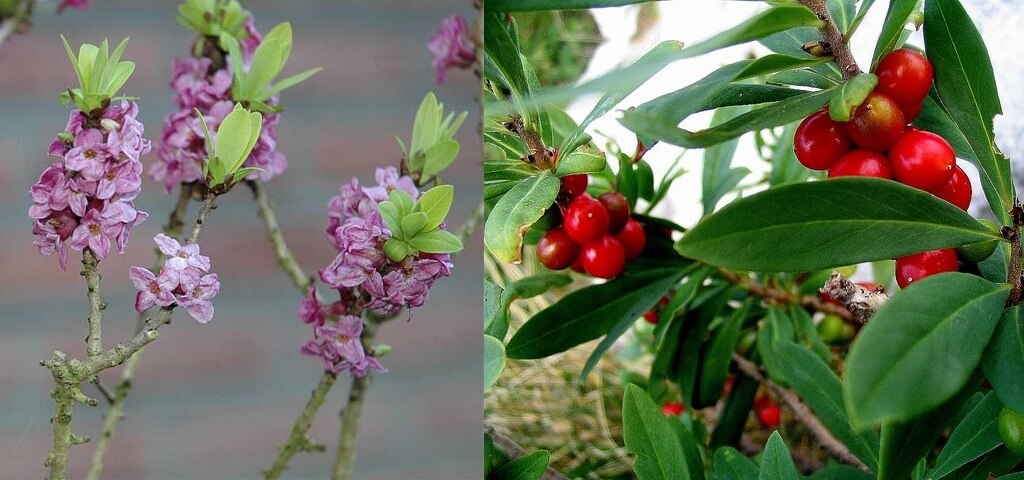
von links: blühend, Quelle: plantsystematics.org || reife Früchte, Quelle: dpic.org
Am häufigsten in Wäldern, auch als Zierstrauch gepflanzt. Alle Teile der Pflanze, insbesondere die Rinde und die aufreizenden scharlachroten Früchte - 30 g - sind eine tödliche Dosis für Pferde.
Vergiftungssymptome:
- Reizung der Schleimhäute
- Kolik Symptome
- Atemlosigkeit
Erste Hilfe
- Rufen Sie so schnell wie möglich einen Tierarzt an!
Wolfsmilch
(lat. Euphorbia)
Quelle: florafocus.wordpress.com
Die ganze Pflanze ist giftig. Der Milchsaft des Wolfsmilchsporns enthält eine giftige Substanz - Euphorbone, die ihn sehr unangenehm schmecken lässt und auch die Verdauungsorgane schädigt.
Vergiftungssymptome:
- Hautreizungen
- Reizung der Schleimhäute
- anhaltender Juckreiz, ständiges Kratzen des Tieres
- Zurückhaltung beim Essen
- übermäßiges Tränen
- Bindehauthyperämie
- Kolik Symptome
- blutiger Durchfall
Erste Hilfe
Als Besitzer sollten Sie sich darüber im Klaren sein, welche Pflanzen für die Gesundheit und sogar das Leben unserer Pferde gefährlich sind. Bevor wir unser Pferd auf die Weide lassen, denken Sie daran, sie auf einen giftigen Snack zu untersuchen, der ihm schaden könnte.
Ganz ähnlich verhält es sich mit Heu – wählen Sie nur bewährte Lieferanten.
Anhand folgender Büchern:
- Bruno P. Kremer "Rośliny trujące w domu, w ogrodzie, w naturze (Giftpflanzen Zuhause, im Garten und Natur)", Multico, 1996
- Blendinger W. ABC zdrowia konia (ABC der Pferdegesundheit), S.93-95. Zrzeszenie Studentów Polskich, Zakład Treningowy Koni w Zbrosławicach, 1984
- Zwoliński J. Hodowla koni (Pferdezucht), S. 342-344. Wyd. PWRiL Warszawa, 1983.






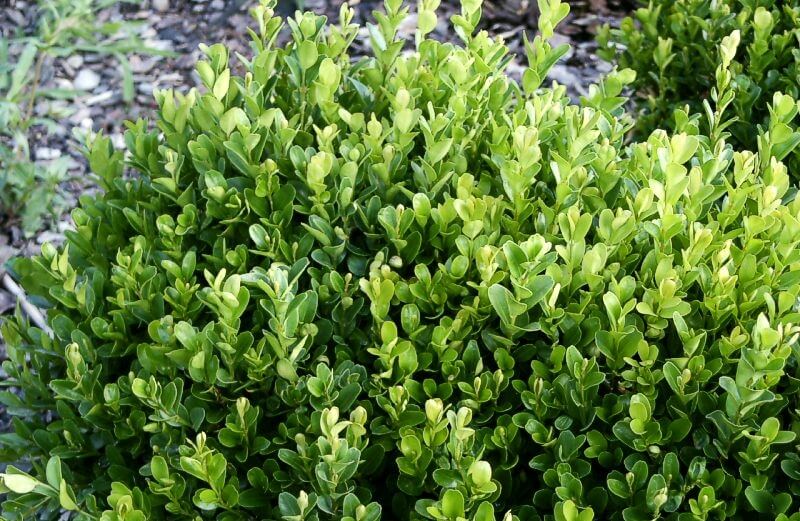
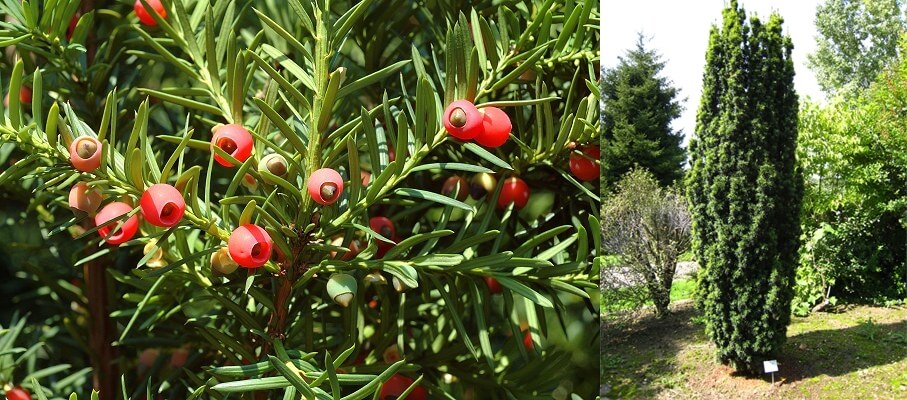
 llessentialherbs.com
llessentialherbs.com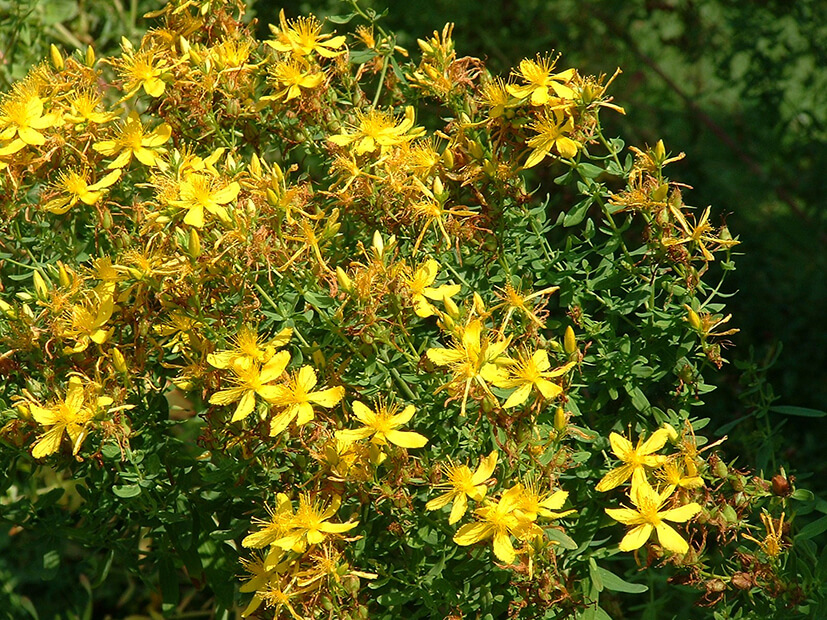
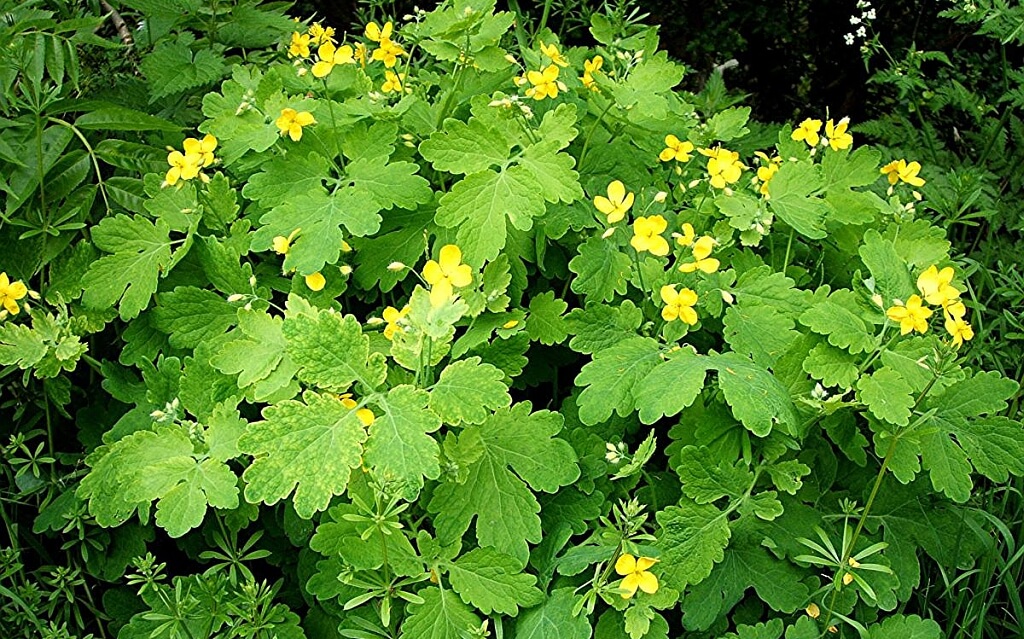
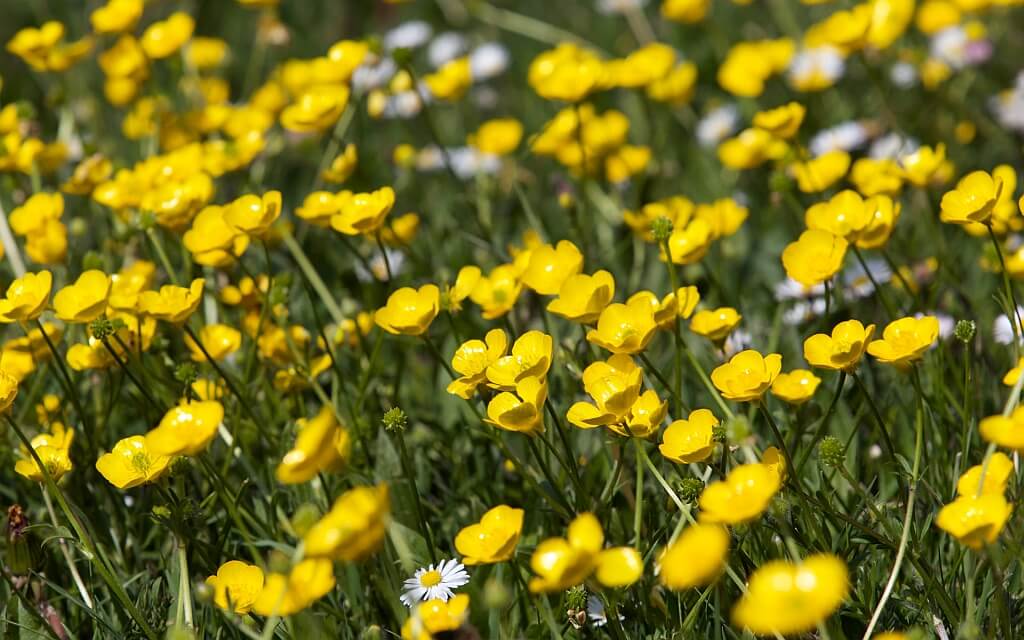
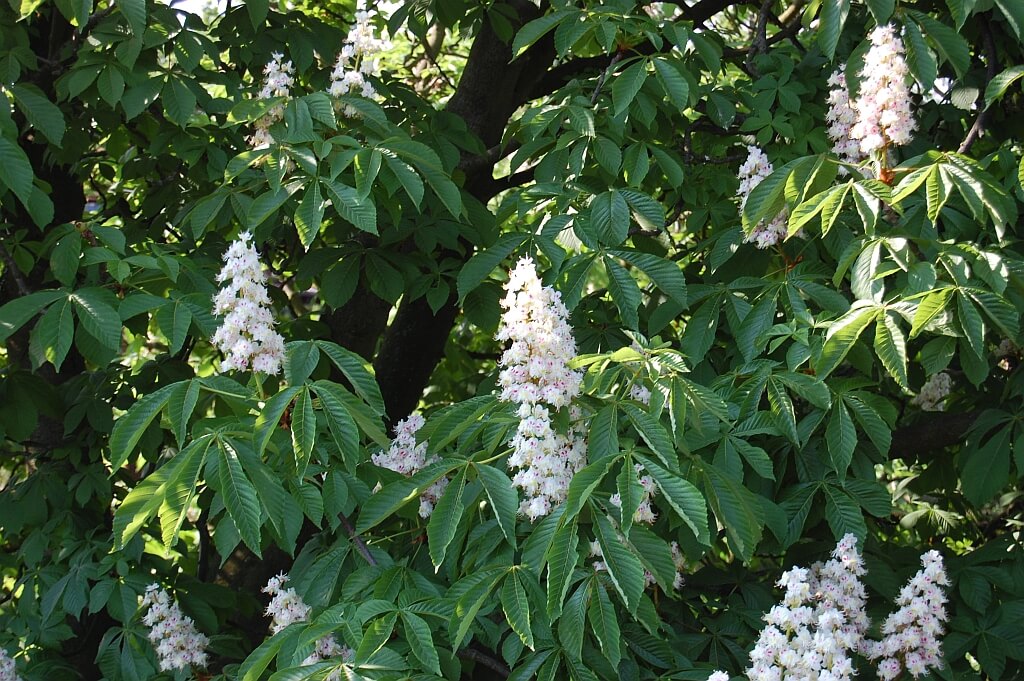
 Quelle: walterblom.nl
Quelle: walterblom.nl

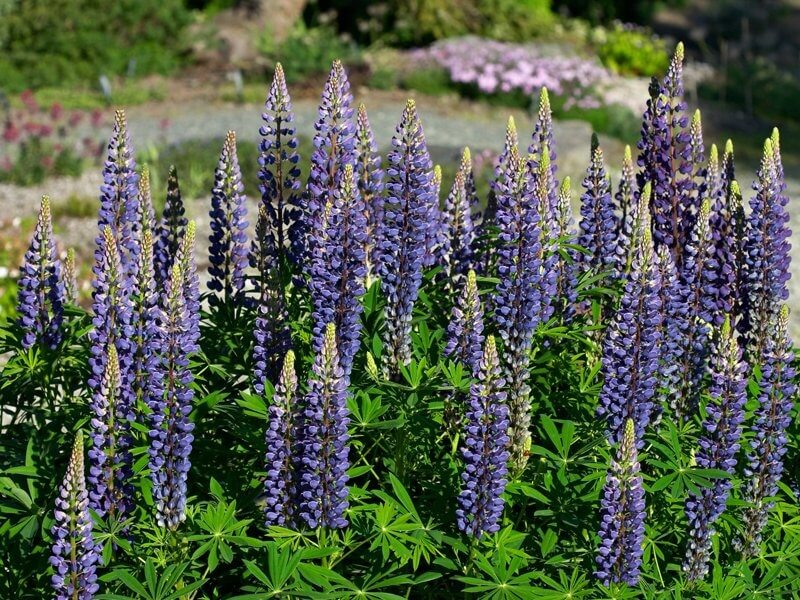
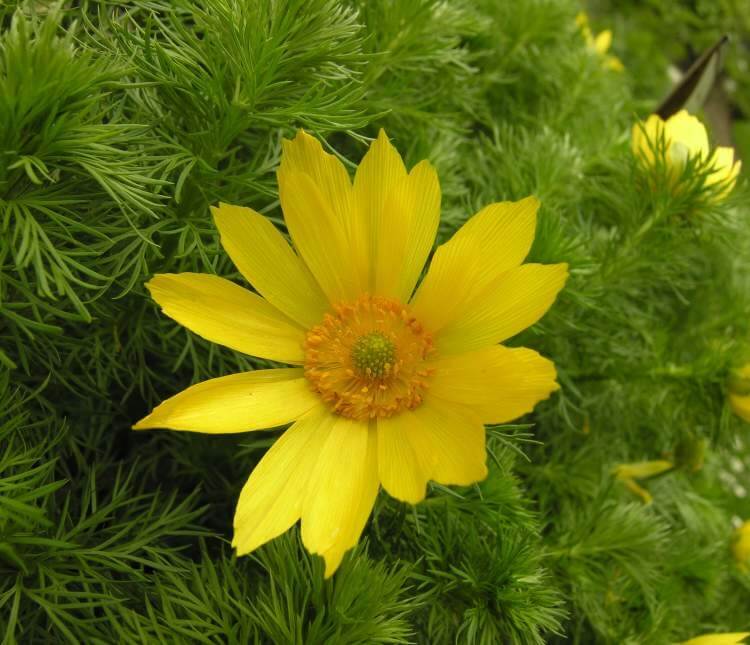
 shutterstock.com
shutterstock.com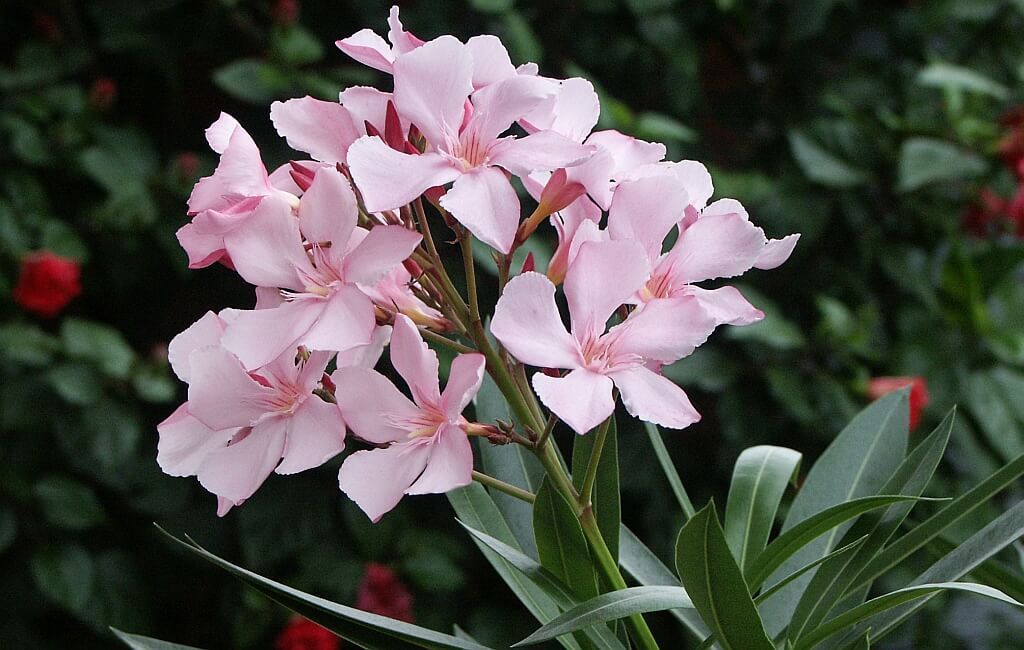

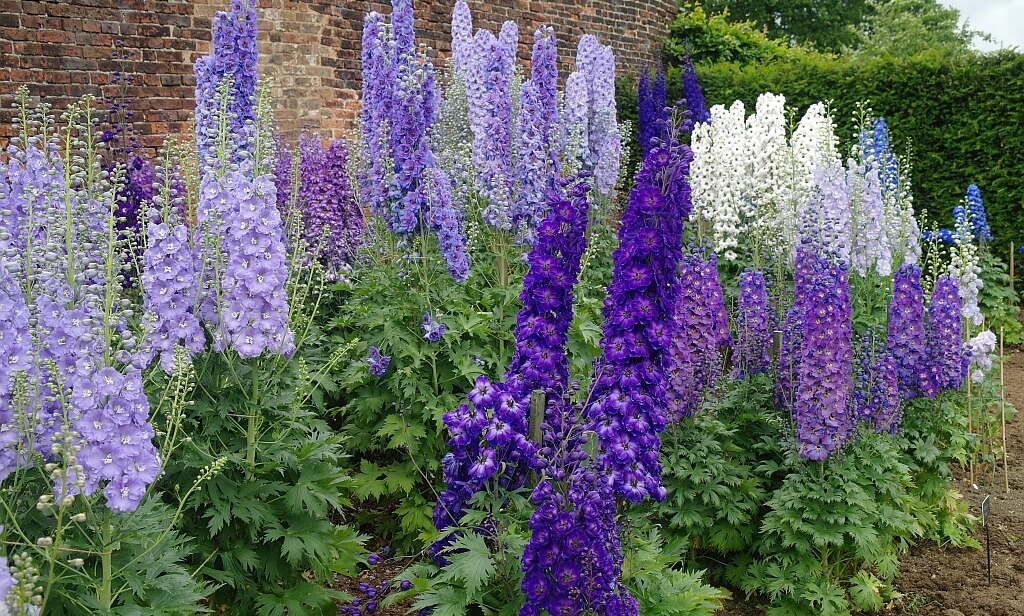
 lookfordiagnosis.com
lookfordiagnosis.com henriettes-herb.com
henriettes-herb.com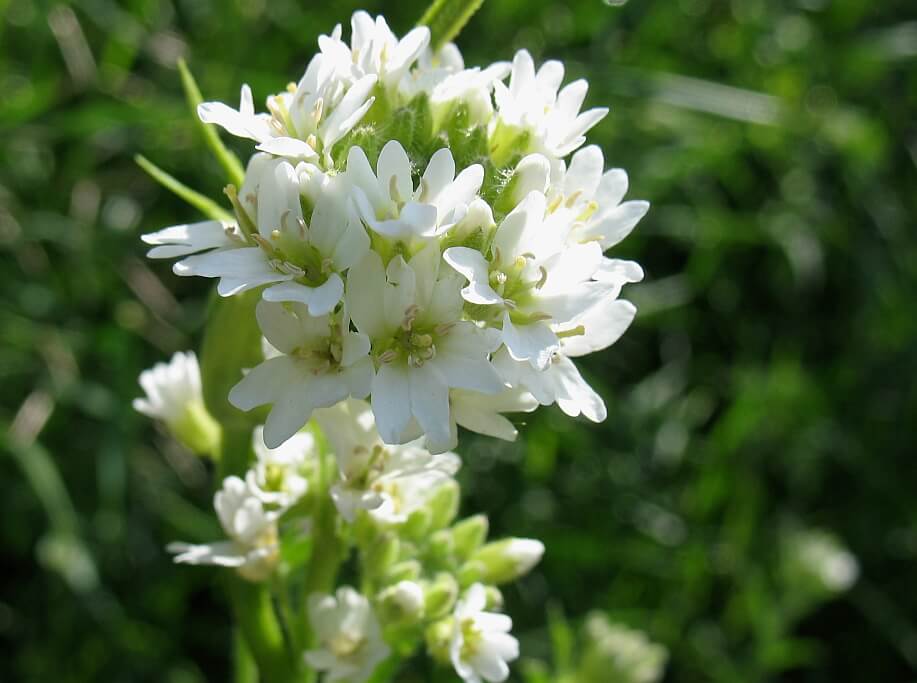
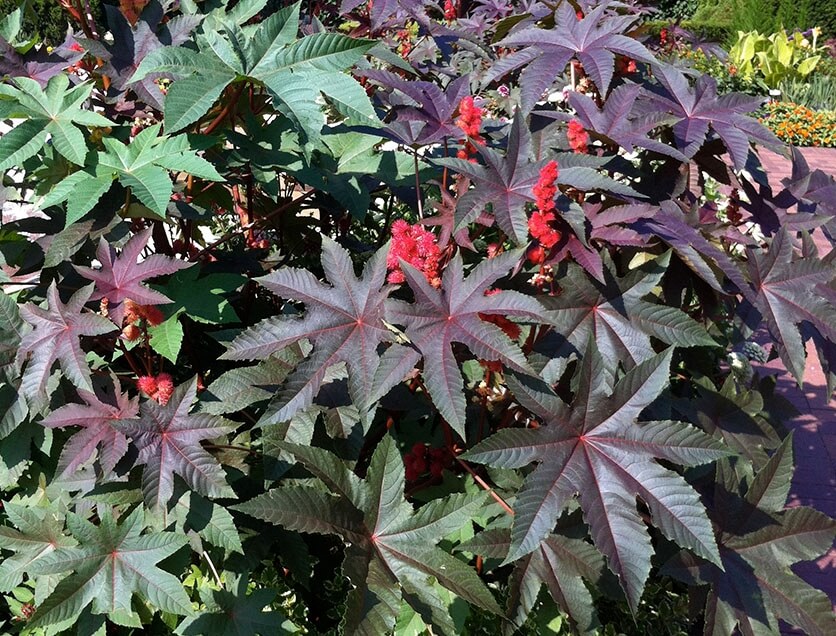
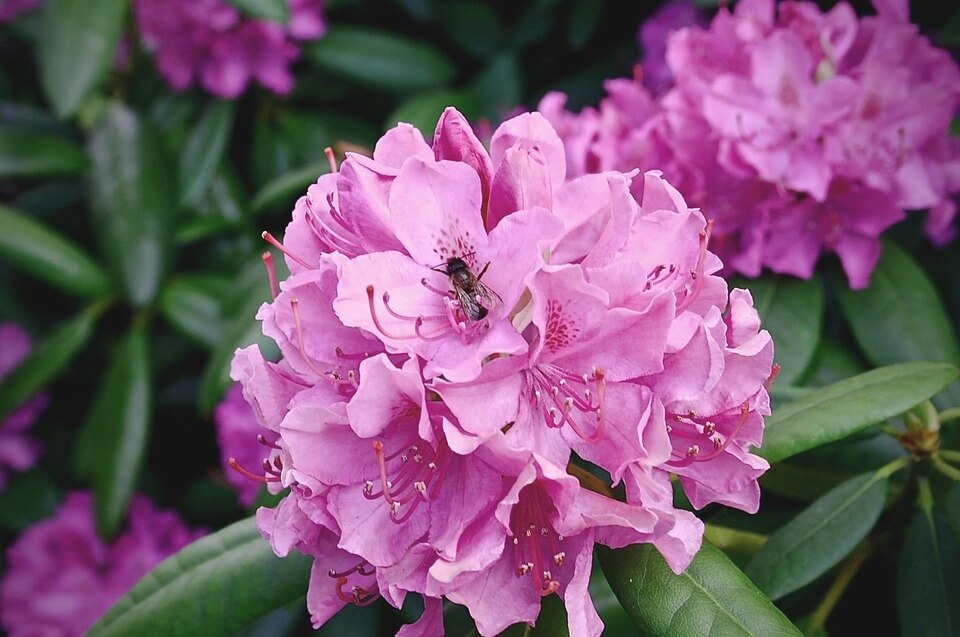
 alamy.com
alamy.com